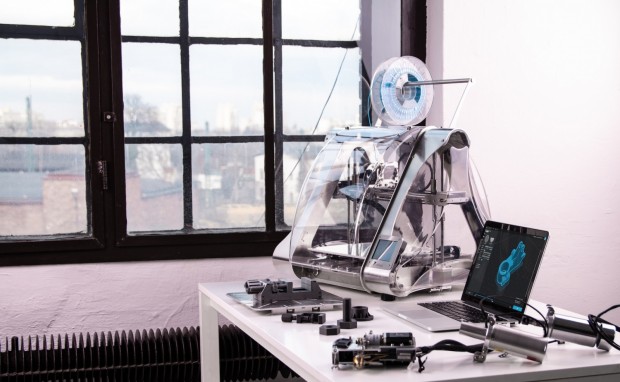The Future of Manufacturing is 3D Printing
Product design and development is a critical part of infrastructure all around the world. Everything from houses to clothing to the tiniest parts of your mobile device requires manufacturing. The future of manufacturing is 3D printing. There is no getting around it anymore. If it can be 3D printed, it will be 3D printed, and while it's a bold claim, there is good evidence to back it.
While 3D printing has been around for a long time, it has been mostly used by scientists and engineers. It was too expensive and too complicated for any consumer to own a 3D printer or for a small company to leverage the technology to manufacture their products. But those tides are turning and here's what you need to know.
3D Printing is Becoming Mainstream
Think about it. In the same way that assembly line manufacturing disrupted how things are made, 3D printing is disrupting the industry as well. Any solid object can be 3D printed. More and more companies are turning to innovations that allow them to create more products while also improving their quality. It's not just for scientists anymore. 3D printing is more accessible to consumers, small businesses, and large companies and it's even making its way into schools. The possibilities are endless-the only limit is your imagination.
3D Printing is Expanding the Possibilities
You can now print objects that were impossible to make with traditional methods. You can print objects that are too big, too small, too delicate, or too detailed for traditional manufacturing methods. You are also able to create items that are impossible to make by other methods by creating them from scratch. No more expensive molds are required. SLA 3D printing is one of the main techniques and technologies that allow even the tiniest of parts to be developed, designed, and crafted. The breadth of opportunity has manufacturers of 3D printers racing to create the fastest 3D printers for consumption.
This Type of Printing Has Been Around a Long Long Time
Most people would think that 3D printing is new. But the truth is that it started in the 1980's. And even as early as 1999, this technology was being used in a big way. In fact, the technology allowed medical professionals to create a urinary bladder to be used for transplants. The implications of this technology for transplanting other organs is incredible. Not only that, but microscopic parts have been historically difficult to manufacture. But 3D printing has changed all of that. What was once patented and very expensive is now affordable even for many consumers.
The Economic Implications are Massive
3D printing is a disruptive technology, which means it has the potential to change the way we do things. It may well turn out that 3D printing will have more impact on manufacturing than any other technology in recent history. What once required a large manufacturing facility can now be completed in a fraction of the space. What once required countless pieces of specialized machinery can now be done with one 3D printer. The cost savings for businesses is enormous and the consumer implications are large as well. The breadth of opportunity has manufacturers of 3D printers racing to create the fastest 3D printers possible for consumers.
It's Not Just for Manufacturers
Consumers can buy printers too. The future of manufacturing isn't just for manufacturers-consumers can buy their own printers too. 3D printers are becoming more affordable and easier to use, which means you can try one out for home use. If you're a hobbyist who likes to make models, toys, or jewelry at home, a 3D printer will allow you to design your own pieces. This can save a lot of money especially if you want to make prototypes and be able to eventually sell your products.
Printing is Becoming Faster and Cheaper
We've already seen the rate of 3D printing increase, and as more companies enter into the market and compete for ever-decreasing profit margins, we're likely to see an even greater push toward speed. In fact, some companies have already developed systems that can produce a small car in less time than in a traditional factory. As these two trends continue-faster printing speeds paired with cheaper prices-more industries are likely to adopt desktop 3D printing technology.
3D Printing Solves Big Problems
3D printing solves some of the most challenging problems in today's global economy. As the technology improves and becomes more accessible, it will become a viable solution for many manufacturing problems that were previously impossible to solve with traditional methods. How do you mass produce nanotechnology? How do you craft parts so small you can't see them with the naked eye? These are some of the issues that 3D printing is solving. The problem of housing and getting homes to remote areas can also be affordably solved with 3D printing techniques.
See Now: NASA's Juno Spacecraft's Rendezvous With Jupiter's Mammoth Cyclone
* This is a contributed article and this content does not necessarily represent the views of scienceworldreport.com





Join the Conversation